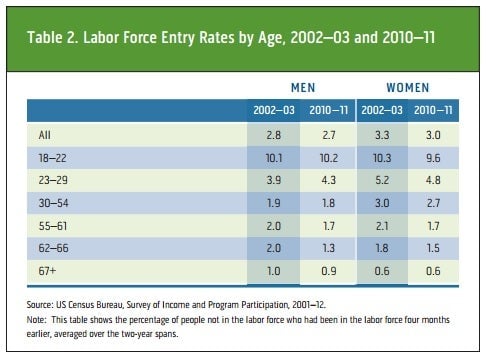The real reason the US labor force is shrinking: millennial women
A big takeaway from last week’s US jobs report was that the labor participation rate fell in July. The decline hints that people who don’t find the job market favorable just stop actively looking for work, which complicates the actual unemployment rate because they are not counted. But research by the Urban Institute (pdf) finds that really isn’t the case. The labor force participation rate hasn’t been falling because of discouraged workers, but because the very people who used to look for jobs are now choosing to go to college. And most of them are female millennials.

A big takeaway from last week’s US jobs report was that the labor participation rate fell in July. The decline hints that people who don’t find the job market favorable just stop actively looking for work, which complicates the actual unemployment rate because they are not counted. But research by the Urban Institute (pdf) finds that really isn’t the case. The labor force participation rate hasn’t been falling because of discouraged workers, but because the very people who used to look for jobs are now choosing to go to college. And most of them are female millennials.

By 2010, fewer women across all age groups—except 67 and older, where there was no change—entered the workforce, compared to the beginning of the decade. The biggest dip came from women between 18 and 22. During the same time period, men between 18 and 29 became more represented in the labor force. On the other hand, labor force exit rates for both men and women fell during the same time. So the case for discouraged workers hurting job participation rates weakens. And why are millennial women choosing to defer their entry to the workforce? The most obvious reason is education. Since 1970, the total number of female undergraduates has exceeded that of male undergrads. That difference is only widening. Thus, these findings do offer some optimism on the overall employment picture.